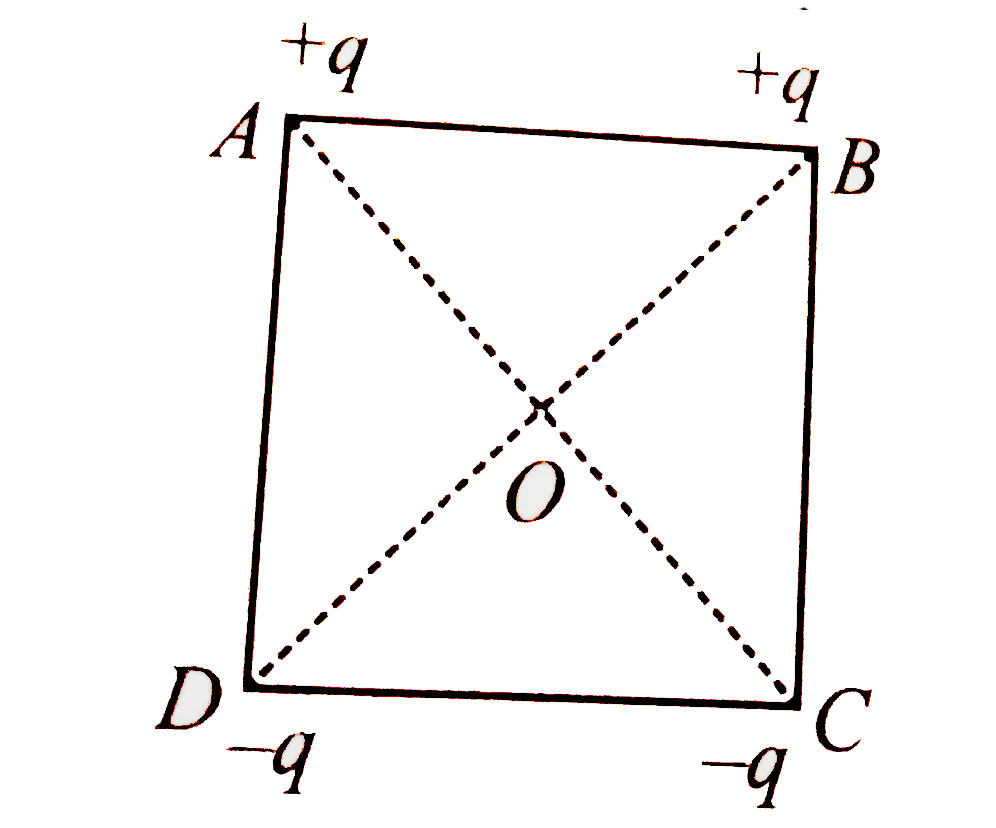The system of four point charges are arranged to be in equilibrium (see figure) under only mutual elestrostatic forces. Find magnitude of Q (in μC). (Neglect gravity) 
The correct Answer is:1
F2−2F1cos30∘=0
⇒K(q)(Q)R2=⎛⎜
⎜⎝2Kq2(√3R)2⎞⎟
⎟⎠cos30∘ 
Q=q√3=√3√3μC=1μC
Similar Questions
An object is in equilibrium under four concurrent forces in the direction shown in figure. Find the magnitudes of F1 and F2

View SolutionFour equal point charges, each of magnitude +Q, are to be placed in equilibrium at the corners of a square. What should be the magnitude and sign of the point charge that should be placed at the center of the square to do this job?
View Solution
Knowledge Check
Three charged particle sare in equilibrium under their electrostatic forces only. Then
Athe particle smust be collinearBall the charges cannot have the same magnitudeCall the charges cannot have the same signDthe equilibrium is unstableTwo particles , each of mass m and carrying charge Q , are separated by some distance. If they are in equilibrium under mutual gravitational and electrostatic force then Q/m(∈C/kg) is of the order of
A10−5B10−10C10−15D10−20Four charges are arranged at the corners of a square ABCD as shown in the figure. The force on the charge kept at the ccentre O is
 Aalong the diagonal BDBalong the diagonal ACCzeroDperpendicular to side AB
Aalong the diagonal BDBalong the diagonal ACCzeroDperpendicular to side AB
A point charge q is placed at a distance r from a very long charged thread of unoform linear charge density λ. Find out total electric force experienced by the line charge due to the point charge. (Neglect gravity).
View SolutionA point charge q is placed at a distance r from a very long charged thread of unoform linear charge density λ. Find out total electric force experienced by the line charge due to the point charge. (Neglect gravity).
View Solution
Three point charges are arranged as show in figure. What is their mutual potential energy? Take q=1.0×10−4Canda=10cm.
View SolutionThree points charges =q, -2q, +q are arranged on the vertices of an equilaterial triangle as shown in the figure. Find he dipole moment of the system.

View SolutionTwo charges +qand−q, each of mass m, are revoloving in a circle of radius R, under mutal electrostatic force, Find (i) speed of each charge (ii) kinitic energy of the system (iii) potental energy of the system and (iv) total energy of the system.
View Solution

